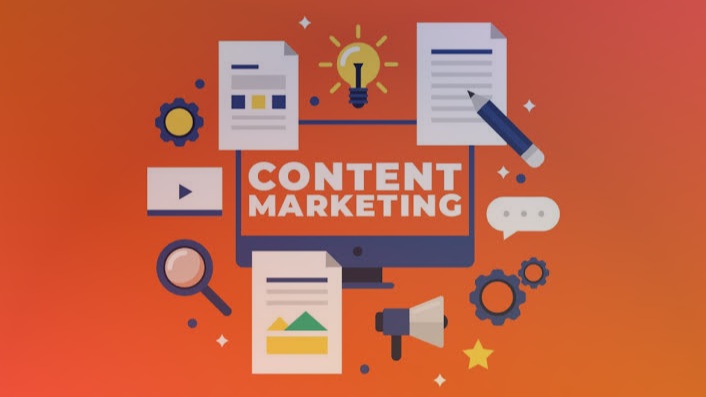Marketing Automation: An In-Depth Guide

Introduction to Marketing Automation
Marketing automation refers to the use of software and technology to automate repetitive marketing tasks, streamline processes, and improve the efficiency of marketing campaigns. By automating tasks such as email marketing, social media posting, and lead nurturing, businesses can save time, reduce human error, and deliver more personalized and timely communications to their customers.
Marketing automation tools are designed to handle various aspects of marketing, including customer segmentation, campaign management, analytics, and reporting. These tools enable marketers to create more targeted and effective campaigns by leveraging data and insights to tailor their messaging to individual customers and prospects.
In this comprehensive guide, we will explore the benefits of marketing automation, key features of automation tools, steps for implementing marketing automation, best practices to maximize its effectiveness, and methods for measuring the success of your automation efforts. By the end of this article, you will have a thorough understanding of how to leverage marketing automation to achieve your business objectives.
Benefits of Marketing Automation
One of the primary benefits of marketing automation is increased efficiency. By automating repetitive tasks, marketers can focus on more strategic activities, such as campaign planning and analysis. This leads to better time management and higher productivity.
Marketing automation also enhances personalization. By using data to segment audiences and tailor messages, businesses can deliver more relevant and engaging content to their customers. This personalized approach can lead to higher engagement rates, increased customer satisfaction, and improved conversion rates.
Additionally, marketing automation provides valuable insights into campaign performance. With built-in analytics and reporting features, marketers can track key metrics, identify trends, and make data-driven decisions. This allows for continuous optimization and better alignment with business goals.
Key Features of Marketing Automation Tools
Marketing automation tools come with a variety of features designed to streamline marketing efforts and improve campaign effectiveness. Some key features include:
Email Marketing Automation: Automate the creation, scheduling, and sending of email campaigns. Use triggers, such as user actions or behaviors, to send personalized emails at the right time.
Lead Management: Track and manage leads throughout the customer journey. Use lead scoring to prioritize high-quality leads and ensure timely follow-up by the sales team.
Customer Segmentation: Segment your audience based on demographics, behaviors, and preferences. This allows for more targeted and relevant messaging.
Social Media Automation: Schedule and publish social media posts across multiple platforms. Monitor social media activity and engage with your audience in real-time.
Analytics and Reporting: Track the performance of your campaigns with detailed analytics and reports. Measure key metrics, such as open rates, click-through rates, and conversion rates, to understand what is working and what needs improvement.
Implementing Marketing Automation
Implementing marketing automation involves several steps, starting with selecting the right tool for your business. Consider factors such as your budget, business size, and specific marketing needs when choosing a platform. Popular marketing automation tools include HubSpot, Marketo, Pardot, and Mailchimp.
Once you have selected a tool, the next step is to integrate it with your existing systems, such as your CRM and email marketing platform. Ensure that all data is synced and accessible for seamless automation.
Develop a clear plan for your automation efforts. Define your goals, target audience, and the specific tasks you want to automate. Create workflows and triggers that will guide your automation processes. Start with simple automation tasks and gradually expand as you become more comfortable with the platform.
Best Practices for Marketing Automation
To maximize the effectiveness of your marketing automation efforts, follow these best practices:
1. Set Clear Goals: Define what you want to achieve with your marketing automation, whether it’s increasing lead generation, improving customer retention, or boosting sales. Clear goals will guide your strategy and help you measure success.
2. Segment Your Audience: Use data to segment your audience and create targeted campaigns. Tailor your messaging to the specific needs and preferences of each segment to increase relevance and engagement.
3. Personalize Your Content: Use personalization to make your communications more relevant and engaging. Personalize emails with the recipient’s name, recommend products based on past purchases, and send targeted offers based on user behavior.
4. Test and Optimize: Regularly test different aspects of your campaigns, such as subject lines, CTAs, and content. Use A/B testing to determine what works best and make data-driven optimizations to improve performance.
5. Monitor and Analyze: Continuously monitor the performance of your automation efforts. Use analytics to track key metrics and identify areas for improvement. Make adjustments based on data to ensure your campaigns are effective.
Measuring the Success of Marketing Automation
Measuring the success of your marketing automation efforts is essential for understanding their impact and making informed decisions. Key metrics to track include:
1. Open Rates: The percentage of recipients who open your emails. This metric indicates how effective your subject lines and email timing are.
2. Click-Through Rates (CTR): The percentage of recipients who click on links within your emails. CTR measures the effectiveness of your email content and CTAs.
3. Conversion Rates: The percentage of visitors who complete a desired action, such as making a purchase or filling out a form. Conversion rates indicate the overall effectiveness of your campaigns.
4. Lead Scoring: Assigning scores to leads based on their behavior and engagement. Lead scoring helps prioritize high-quality leads for follow-up by the sales team.
5. ROI: Calculate the return on investment for your marketing automation efforts by comparing the revenue generated to the costs incurred. This metric provides a clear picture of the financial impact of your campaigns.
Regularly review these metrics and use them to inform your strategy. Make data-driven adjustments to optimize your campaigns and achieve better results.
Related Post










